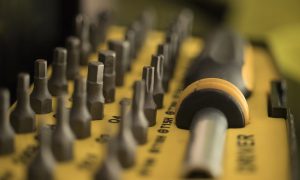Many reporters have turned their smartphones into complete media devices. They fit in a pocket and give you many of the capabilities of dedicated still and video cameras. But even the latest and fanciest smartphone camera has operational and physical limitations.
For top quality, nothing beats specialized gear, which can significantly improve what your camera produces while still allowing you to travel light. Here is some gear to consider for your next assignment.
Extra lenses
The biggest advantage of a good quality camera (including some sophisticated point-and-shoots) is the ability to change the lens. The more professional the camera, the more likely you’ll be able to swap out lenses for different effects, such as extreme close-ups, wide angles and long-distance shots.
Phones without some augmentation—the iPhone 7 has true optical zoom, for example—don’t have the versatility. You won’t get a really side angle. You can’t zoom in on an object; instead, the phone only enlarges the entire image and shows part of it. The process gives up resolution and image quality. Fortunately, there are lens additions for smartphones that add versatility. The downside is that you’ll be tightly constrained by the phone model; iPhones have the widest accessories selection.
The company olloclip has some well-regarded lenses and sets for iPhones, including wide-angle, telephoto and macro (close-up) lenses. Photojojo has a selection of lenses, including a telephoto, wide-angle and polarizer (used to reduce glare), that fit virtually any mobile device with a camera.
Enhanced lighting
Artificial light is important in photography. Besides enabling pictures when the ambience is more romantic than reportorial, having an additional source can help you balance the light. If one side of a face is in deep shadow, adding some fill-in will produce a more symmetrical shot. Or you can help make a subject stand out from the background by lighting it more brightly.
The small light on your smartphone isn’t much of a flash, but you can get additional help. For nighttime video, the iBower Smartphone LED Video Light connects to your phone and lasts for as long as 18 hours. It comes with colored plates and a diffuser for softer-looking results. Also consider the Dracast Camlux Pro units, well-reviewed for their soft lighting effects.
Support and stability
Ever take a shot or video that looked good on your phone’s screen only to find that it was fuzzy or jerky on a bigger display? Human hands shake and even imperceptible movement can undercut the quality of your results. Sometimes the easiest and cheapest fix is to take a small beanbag or wadded up sweater or jacket, place it on a solid surface, and then prop the phone on top, using the surface to help steady things.
Depending on circumstances and environment, that may not work. But you can get a smartphone clamp, like one from established camera gear maker Manfrotto, which holds the phone and provides a connector for a traditional photo or video tripod. There are even 3-axis stabilizers like those from Zhiyun, which are designed to help you do smooth hand-held videos. Stabilizers take practice to use well, but can be worth the effort.











